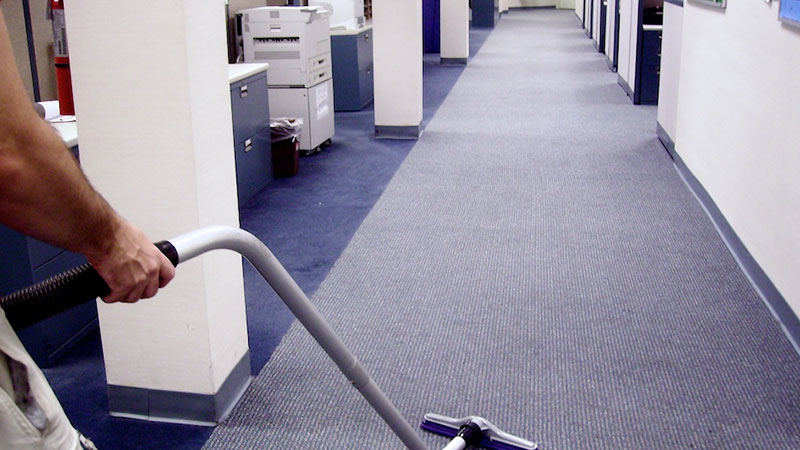Caring for wool carpets involves more than just occasional cleaning; it demands an understanding of their unique properties and needs. One common question that arises is: How often should you vacuum wool carpet? This introductory guide delves into the nuances of maintaining wool carpets, from selecting the right vacuum cleaner to adjusting your cleaning schedule based on household traffic and other factors. We’ll explore why wool carpets require special attention and how you can keep yours looking pristine for years to come.

1. Introduction
Overview of Wool Carpet Characteristics
Wool carpets are a popular choice for homes due to their durability, natural beauty, and excellent insulation properties. Made from the natural fibers of sheep, these carpets are not only soft and luxurious underfoot but also inherently stain and flame resistant. Wool’s structure helps it repel dirt and spills, making it easier to maintain. However, wool carpets can retain hidden dirt due to their dense fiber arrangement, which underscores the importance of a proper vacuuming routine.
Importance of Regular Maintenance
Regular maintenance is crucial for extending the life and appearance of your wool carpet. Vacuuming is a key component of this maintenance, effectively removing dust, allergens, and particulate matter that can wear down the fibers over time. Regular cleaning prevents the accumulation of grime that can permanently alter the texture and color of the carpet. Moreover, well-maintained wool carpets contribute to a healthier indoor environment by minimizing airborne allergens.
2. Understanding Wool Carpets
Properties of Wool Carpets That Affect Cleaning Needs
Wool is a natural fiber renowned for its resilience, comfort, and sustainability. The unique properties of wool carpets directly influence their cleaning and maintenance needs:
- Absorbency: Wool fibers can absorb a significant amount of moisture without feeling wet. This characteristic makes wool carpets susceptible to mold and mildew if not maintained properly, especially in humid conditions.
- Elasticity: Wool fibers are naturally elastic, allowing them to recover quickly from compression caused by furniture or foot traffic. This resilience makes regular vacuuming important to restore the pile’s appearance and prevent permanent marks.
- Dirt Resistance: Wool’s natural coating of lanolin repels water and stains, yet it can still trap dust and dirt within its fibers. Regular vacuuming is essential to remove this embedded debris and prevent the degradation of the fibers.
- Flame Retardancy: Wool is naturally flame-resistant, making it a safe carpeting option. While this doesn’t directly impact vacuuming routines, it’s a noteworthy property that enhances the overall value and safety of wool carpets in your home.
3. Recommended Vacuuming Frequency
3.1 General Guidelines
The frequency of vacuuming wool carpets largely depends on the level of foot traffic and use. For areas that experience high foot traffic, such as hallways, living rooms, and entryways, it is recommended to vacuum at least two to three times a week. This helps to prevent dirt and debris from being ground into the carpet fibers, which can lead to premature wear and damage. For lower traffic areas, such as bedrooms or guest rooms, vacuuming once a week is typically sufficient to keep the carpet in good condition.
3.2 Adjusting Frequency Based on Specific Conditions
The presence of pets, children, and specific lifestyle factors can significantly impact how frequently you should vacuum your wool carpet:
- Pets: Homes with pets, especially those that shed, may require vacuuming more frequently — ideally, every day or every other day. Pet hair and dander can quickly accumulate within the fibers of the carpet, not only affecting the appearance and cleanliness but also potentially aggravating allergies.
- Children: Households with small children often experience more spills and debris from playtime activities. In these cases, vacuuming may need to be more frequent to manage crumbs, dust, and potential allergens, ensuring a clean and safe play environment.
- Lifestyle: The overall lifestyle also plays a role in determining vacuuming needs. For example, if outdoor activities are common, more dirt and debris might be tracked indoors, necessitating more frequent vacuuming to keep the carpets clean.
4. Conclusion
Maintaining the pristine condition of wool carpets involves more than just occasional clean-ups; it requires a consistent and appropriate vacuuming routine. Regular vacuuming not only enhances the visual appeal of wool carpets but also contributes significantly to their longevity and durability. By removing dirt, dust, and allergens from the fibers, vacuuming helps preserve the natural qualities of wool, ensuring it remains resilient and robust against daily wear and tear.
Want to know which vacuums are rated the highest for cleaning wool carpets? top-rated vacuum for wool carpets has all the information you need.
